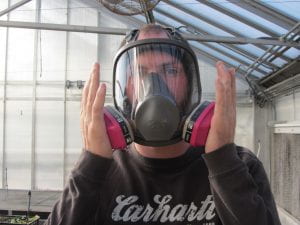The Ohio Department of Agriculture (ODA), is partnering with the Ohio State University Extension Pesticide Safety Education Program (PSEP) to temporarily offer online recertification for pesticide applicators and fertilizer certificate holders whose licenses expired or are due to expire this year, and were unable recertify as a result of the COVID-19 pandemic. The online recertification for private pesticide applicators and fertilizer certificate holders will be available starting Monday, July 6. Commercial pesticide applicators will be able to recertify online beginning August 10. For more information or to register for the online recertification, visit pested.osu.edu/onlinerecert.
Training videos for recertification will include category specific, up-to-date information provided by ODA, Ohio State University Specialists, Field Specialists, and Extension Educators. The cost for online training is $35 for private applicators and $10 for fertilizer recertification. The price per credit hour for commercial applicators is $15. Your license number or applicator ID will be required to complete the recertification process. If you don’t know your license number, please contact ODA at 614-728-6987, choose option 1.
Applicators are still required to meet their recertification requirements to renew licenses and certifications. As a result of HB 197, applicators have until 90 days after the emergency is over or December 1, whichever comes first, to complete their requirements. Recertification status can be checked online here. Applicators must also submit a completed renewal application and pay an additional fee to the ODA for licensure.
For additional information regarding online recertification, please contact the Ohio Department of Agriculture at 614-728-6987, and press 1 for licensing recertification, or the OSU Pesticide Safety Education Program at 614-292-4070.
